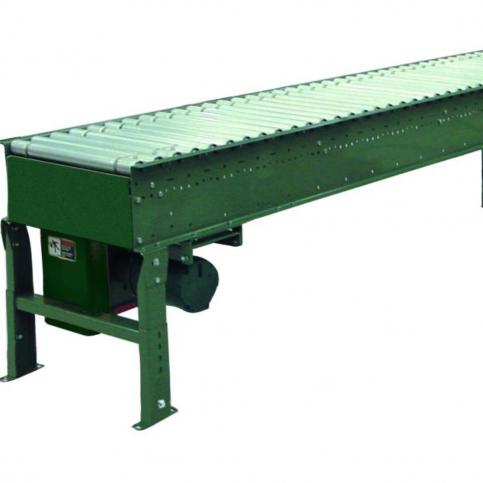In the previous blog, the basic parameters of selecting a conveyor roller were explored. However, a roller conveyor comprises a lot more than the rollers. There are numerous configurations within this one category, such as line shaft roller conveyor, straight spur roller conveyor, curved roller conveyor, and more. In this blog, the basics of a line shaft conveyor will be explored in detail.
What Is A Line Shaft Roller Conveyor?
In essence, line shaft roller conveyors consist of a shaft that runs beneath the rollers. It runs along the length of the conveyor and primarily transmits power from the motor to the individual rollers. It does so with the aid of spools. There are spools spanning the entire length of the shaft, and each spool is connected to an individual roller via an elastic, polyurethane belt. This type of conveyor is mainly used for transmitting lighter loads, typically not more than 50 kg in most cases.
Advantages Of A Line Shaft Roller Conveyor
- These roller conveyors are known for their quiet operation, ease of installation and maintenance, and cost-effectiveness.
- These conveyors are also excellent from a safety perspective as there is a lower risk of snagging fingers due to the presence of elastic polyurethane belts.
- The spools can slip on the shaft by design. Therefore, when a product is stopped or accumulated it can slide along the shaft, making it much smoother.
Disadvantage Of Line Shaft Roller Conveyor
The one major drawback is that the product being conveyed has to span at least three conveyor rollers. However, if this isn’t possible, it is better to opt for alternatives such as conveyor belts for smaller loads.
To know more about other types of conveyors and customized material handling solutions, reach out to us at Norpak Handling. We will be happy to provide extensive consultations in order to ensure you choose the best conveyor system for your particular operations.










